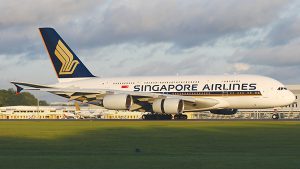Bloomberg
The day after Wuhan went into a lockdown in January 2020, Singapore Airlines Ltd Chief Executive Officer Goh Choon Phong called a crisis meeting at Airline House, the company’s massive, factory-like headquarters at the end of Changi Airport’s runways. The question to be answered: How bad is this going to be?
Within weeks, as China locked down more cities to try to stop the novel coronavirus spreading and nations began to shut their borders, a chilling reality emerged.
Goh and other executives realised that if they didn’t take drastic action fast, the airline that Singapore spent seven decades building into one of the world’s largest and most respected international carriers could go out of business.
“At that point, absolutely we were serious about it,†Goh said in an interview. The company could not take for granted that it would be bailed out, he said.
What emerged over those tense weeks of meetings, while airlines around the world filed for bankruptcy or sought state help to stay alive, was a new strategy at Singapore’s flag-carrier — one that not only allowed the airline to weather the pandemic, but would set it up to capitalise on the weakened state of its competitors once travel began to rebound.
Consistently voted one of the world’s top three airlines for the past decade, the company could only wait for the pandemic to run its course.
Unlike rivals such as Qantas Airways, or Delta Air Lines, Singapore Airlines has no domestic market.
By April 2020, it was operating at just 3% of pre-Covid capacity. Persuading investors to put up money for a business that was burning through as much as $291 million a month, was the key to survival, according to Lee Lik Hsin, executive vice president of commercial operations.
“Stakeholders came in to support us very strongly,†Lee said. “They recognised the importance of Singapore Airlines to the Singapore hub and then to the Singapore economy as a whole.â€
The willingness of retail and institutional investors to buy the shares and bonds was partly a testament to the airline’s status in the country. Support from state-owned investment firm Temasek Holdings Pte. was also crucial to the fundraising.
Singapore Airlines still faces headwinds from the tail of the pandemic and the war in Ukraine. By the end of September it will only be back to two-thirds of its pre-Covid capacity.
 The Gulf Time Newspaper One of the finest business newspapers in the UAE brought to you by our professional writers and editors.
The Gulf Time Newspaper One of the finest business newspapers in the UAE brought to you by our professional writers and editors.
